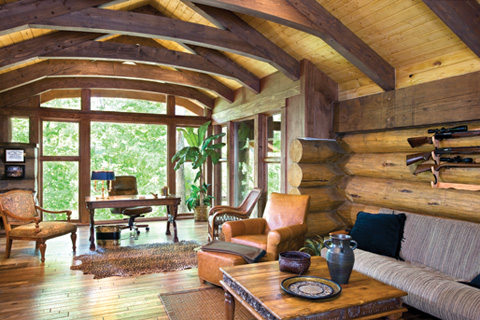
Mixing Materials
Log or timber? For many homeowners the answer may actually be both. A growing trend in construction across North America involves the inclusion of both log and timber elements in new homes. This combination brings endless possibilities to the look and ambience of a new home, and consultants have
steadily warmed to the idea.
“In my perspective, there are no rules. It’s wide open to the customer’s imagination,” observes Dave Carter, owner of Appalachian Log and Timber Homes in Knoxvill
